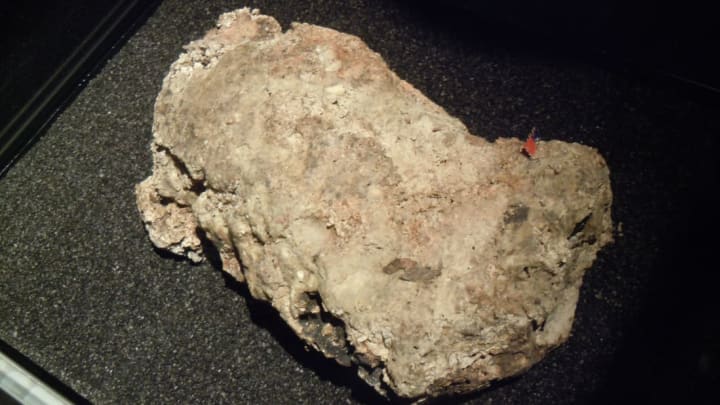Fatbergs—typically masses made from congealed grease, diapers, wet wipes, and other trash—have a tendency to form where they’re not wanted, but a new one floating in the sea just off Amsterdam was put there deliberately. As Gizmodo reports, designers Mike Thompson and Arne Hendriks constructed the buoyant blob to be a statement-making piece of experimental art.
Their Fatberg (capital F) started in 2014 as a single drop of fat in a glass of water. In the time since then, Thompson and Hendriks have grown it into a 2205-pound behemoth by gradually adding melted-down vegetable and animal fats to the mound. Unlike fatbergs that appear in the wild (a.k.a. city sewers), this monstrosity is pure fat. The two masterminds hope to eventually incorporate human fat obtained from a liposuction procedure.
The project is less a statement about the litter and pollution that leads to fatbergs clogging up our sewers as it is about the meaning of the fat itself. “Basically we’re doing this because fat is a very interesting material—it’s probably the most iconic material of time,” Hendriks told Gizmodo. “It’s organic, but it speaks about energy. It speaks about health. It speaks about over-consumption. It speaks about beauty.”
The two men plan to continue growing their fat island with the goal of getting it big enough to stand on and towing it to the North Pole. But they have a long way to go before they break the record for biggest fatberg—that title belongs to the Whitechapel fatberg, which weighed a whopping 143 tons when it was pulled from a London sewer in 2017.


[h/t Gizmodo]
